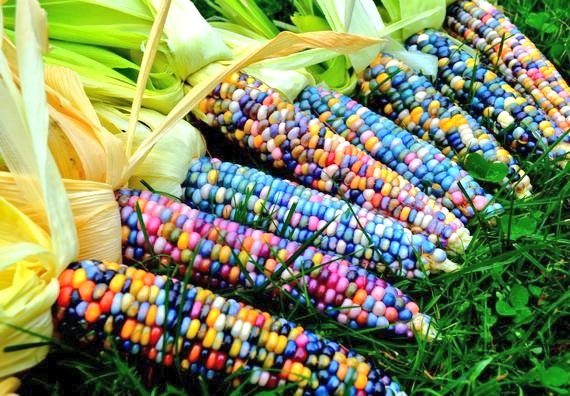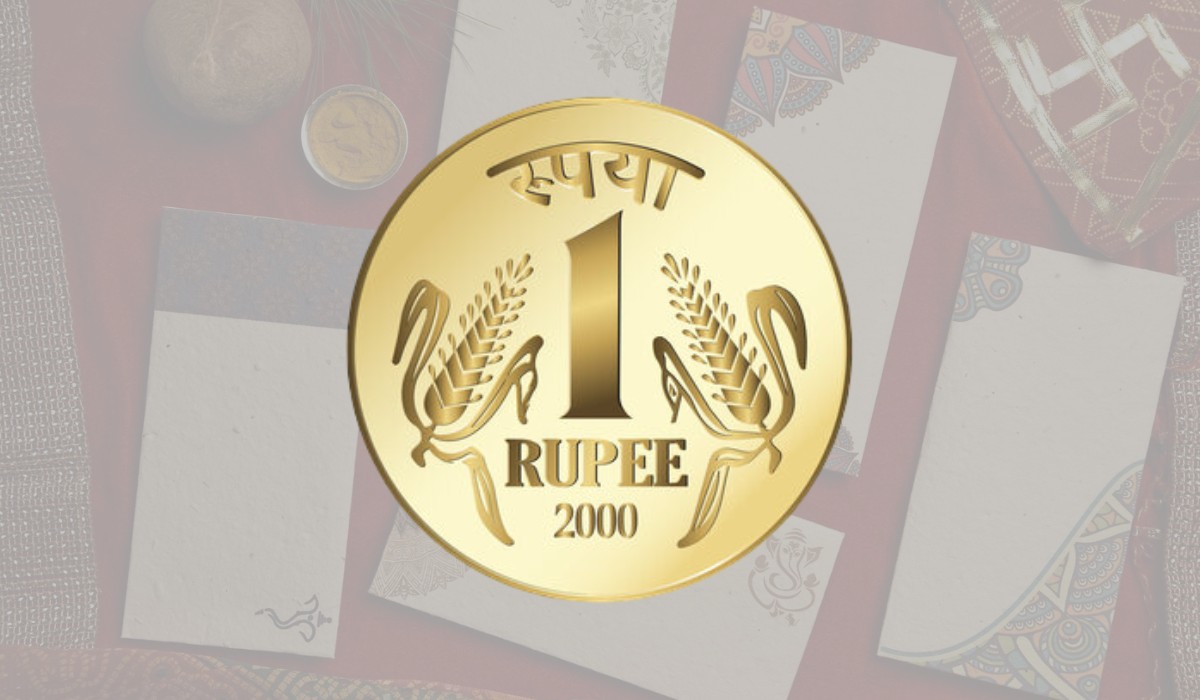Tassels, silk, and glass gems—objet de luxe or, well, grain? If you’re thinking of a certain husk-swaddled treasure, you are correct: Corn in general, and a rare heirloom variety in particular. Tassels and silk, with their pollen and ovules, are the so-called trimmings that produce an ear of corn. And glass gem is the name of a beautiful variety with a palette of improbable colors: lilac, merlot, robin’s egg blue, pearl, and baby pink. Yes, it’s real, and, as an heirloom, its seeds will grow true.
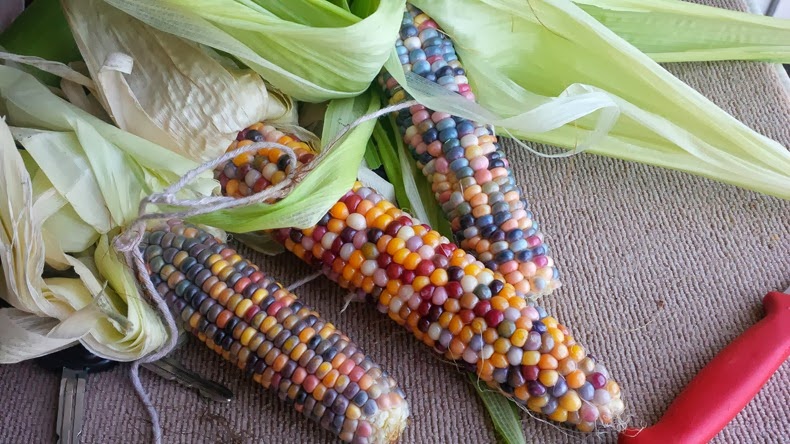
No one had ever seen corn like this before
Glass gem corn was born in Oklahoma, bred by a part-Cherokee farmer named Carl Barnes who had a knack for tinkering with corn. Over successive generations, Barnes selectively saved and planted seeds that demonstrated vibrant colors. Eventually, the octogenarian “corn teacher” bestowed his seed collection to Greg Schoen, corn-breeding protégé. Schoen, looking for a safe place to store Barnes’s legacy, in turn, passed on a sampling to fellow seedsman & seed saver Bill McDorman (at the time, McDorman was the owner of Seeds Trust, a small seed company. Today, he’s the executive director of Native Seeds/SEARCH). Naturally, the seed lover selected several of the curiously-named “glass gems” to plant in his garden. He was not disappointed. “I was blown away,” McDorman recalls. “No one had ever seen corn like this before.”
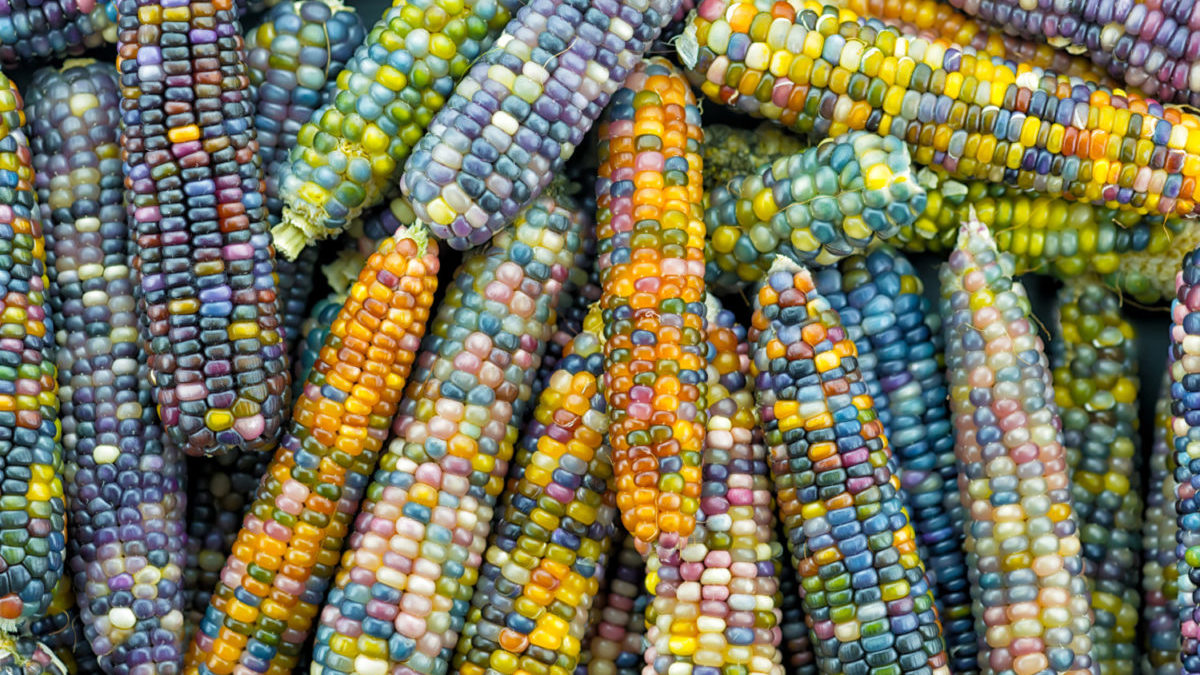
Why the demand?
Seeds sold quickly once photographs hit the internet (there is now a long waiting list at Seeds Trust, who anticipate available seeds for December). Why the demand? Glass gem is an extraordinary example of corn’s natural growth. Anyone who’s buttered a cob is familiar with the slight idiosyncrasies of its kernels—a lighter white nestled by a darker yellow, perhaps. This is because each kernel is independently pollinated via its own silk stigma, which correlates to a unique set of genes, including those that control size and color.
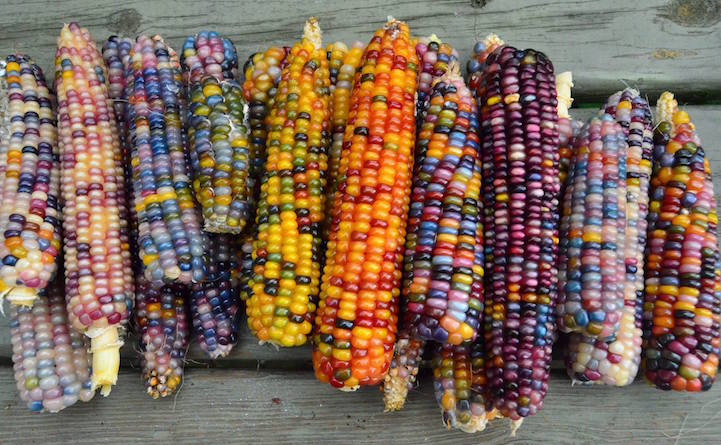
Colors also occur as an integral part of biochemical reactions
In fact, just about all corn ears were multi-colored before human selection. And before 1950, most of the corn grown in the US was open-pollinated. Today’s commercial corn is hybridized—bred for flavor, color, and size. As to how different colors evolved, or were selected, one science writer summarizes thusly: “Livestock feeders prefer vitamin-rich yellow kernels, Southerners like white kernels, and Native Americans favor blue. Years of the deliberate selection, careful pollination, and storing of seeds produced these single-color corn ears. … In general, colors help a plant attract or repel other organisms or hide from predators. Colors also occur as an integral part of biochemical reactions. Some studies suggest corn pigments promote resistance to insects or fungi that invade an ear of corn.”
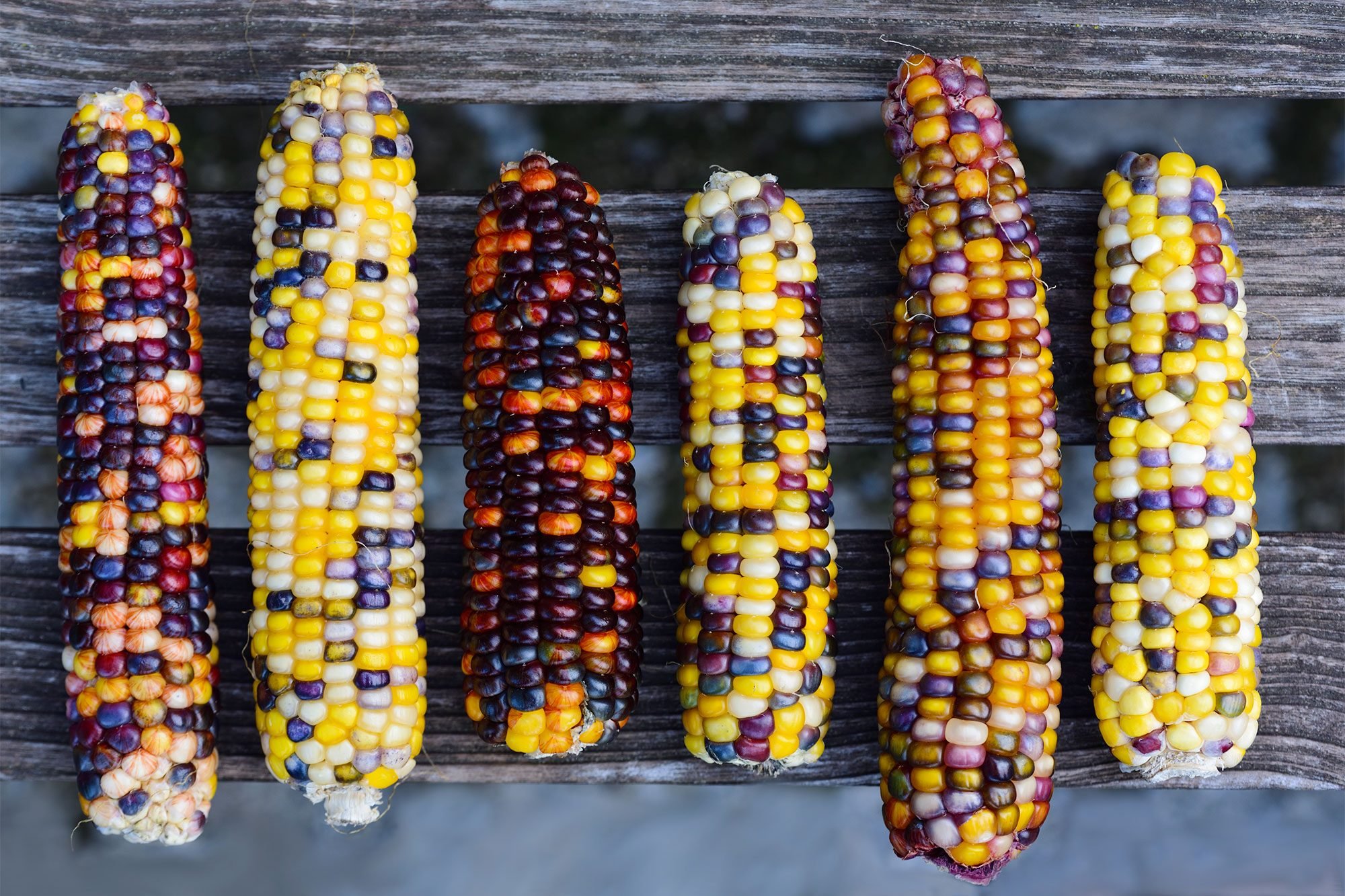
Glass gem corn is edible
The silks that precede the kernels are no different from any other flower’s stigma (pollen receptor). A well-developed ear has 750 to 1,000 ovules (potential kernels), each producing silk (of which about 400 to 600 will be fertilized and eventually produce kernels). Silks are covered with fine, sticky hairs that catch and anchor pollen grains. When pollinated, each silk will yield its own fruit or kernel. When the ovule at the base of the style is fertilized with pollen from a variety with a gene for a certain color kernel, that color can manifest as a single kernel in the new ear. And where does the pollen come from? Pollen anthers develop at the top of the stalk, in tassels arrayed like luxurious fringe. Each tassel contains from 2 to 5 million pollen grains. An individual’s pollen rarely reaches its own silks, so the pollen usually comes from an adjacent plant. And, depending on the neighborhood, all sorts of color combinations can feasibly grow.

It should be noted that, while glass gem corn is edible, it’s not sweet off the cob. It’s a flint variety, which is often used to make flour, or simply ornamental.







